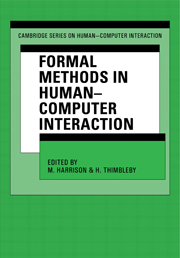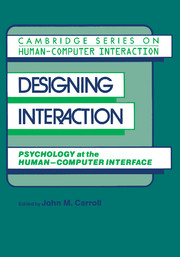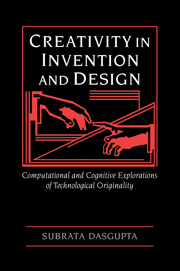Formal Methods in Human-Computer Interaction
First published in 1990, this book discusses the application of formal methods to the human-computer interface. Formal methods - the attempt to provide methods that rigourously and unambiguously describe the behaviour of a computer program or system - is receiving a great deal of attention in human-computer interaction (HCI). Topics such as the specification of a system, the construction of a system from its specification and the abstraction of a specification from an existing system, are clearly of great theoretical and practical interest. The contributors to the work are well-known in the field of HCI and their articles cover much of the work in the area. The book is a series of papers specially commissioned by the editors for the book; it is thus a coherent and important contribution to the area.
Product details
July 2009Paperback
9780521448673
344 pages
229 × 152 × 18 mm
0.51kg
Available
Table of Contents
- Preface
- Contributors
- 1. The role of formal methods in human-computer interaction Michael Harrison and Harold Thimbleby
- 2. HCI formalisms and cognitive psychology: the case of Task-Action Grammar Franz Schiele and Thomas Green
- 3. Putting design into practice: formal specification and the user interface Roger Took
- 4. Non-determinism as a paradigm for understanding the user interface Alan Dix
- 5. A state model of direct manipulation in interactive systems Michael Harrison and Alan Dix
- 6. Specification, analysis and refinement of interactive processes Bernard Sufrin and Jifeng He
- 7. From abstract models to functional prototypes Colin Runciman
- 8. Designing abstractions for communication control Gilbert Cockton
- 9. Structuring dialogues using CSP Heather Alexander
- Bibliography
- Index.





